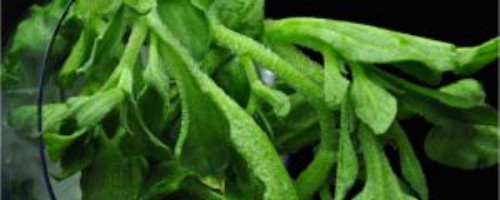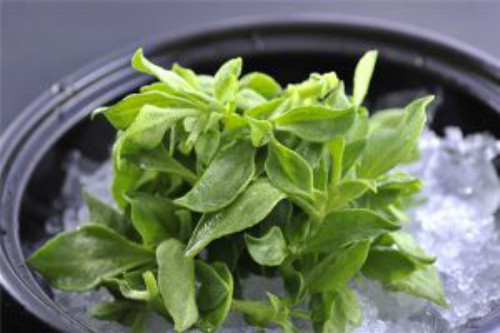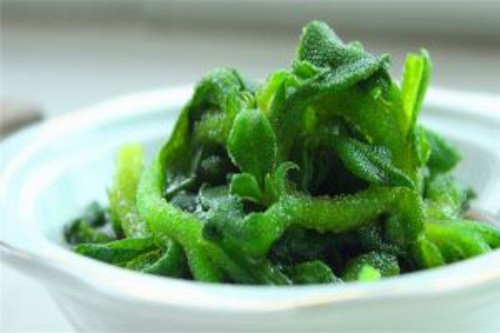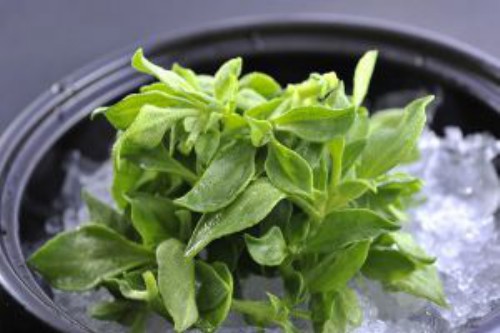The English scientific name of messembryanthemum crystalinum L. is "messembryanthemum crystalinum L.", which is also called "Ice plant" for short. in Japanese, it is called "ァィスプラント". This plant is native to Africa, so it is also called "Mesembryanthemum crystalinum L.", which belongs to a biennial herb flower of Armeniaceae. It is unique in that there are a large number of vesicular cells on the leaves and stems, which are filled with liquid and reflect light under the sun, just like ice crystals, hence the name. In addition, it has many aliases, such as iced vegetable, iced leaf Japanese flower, wild wheat, flat spike wheatgrass, feathered wheat grass, crystal iced vegetable, ice column and so on.

breeding methods and precautions of Mesembryanthemum crystalinum L.
Breeding method
Sowing and seedling raising:
Sowing time: Sowing begins when the temperature is lower than 28℃ in early autumn.
Sowing method: direct seeding or plug seedling can be used.
Seed treatment: before sowing, the seeds can be soaked in warm water of about 30℃ for 2 ~ 4 hours.
Sowing details: Dig holes according to a certain plant row spacing, sow 4-5 seeds per hole, and cover the soil about 1 cm.
Light and temperature:
Illumination: Sunflowers on ice leaves like sunlight, and sufficient illumination should be ensured during growth.
Temperature: The suitable temperature for growth is 5-25℃, and the temperature below 5℃ or above 30℃ is avoided.
Water management:
Watering: Keep the soil moist, but avoid over watering to avoid waterlogging.
Salt tolerance: Japanese flowering plants with ice leaves have high salt tolerance, so proper concentration of salt water can be irrigated after transplanting to improve the taste.
Soil and fertilization:
Soil: Sandy loam with good drainage conditions is selected for cultivation.
Fertilization: topdressing is not required during the growth period. If the growth potential is weak, special fertilizer can be sprayed on the leaves in combination with water spraying.
Pest control:
There are few diseases, and the main pests are aphids and white planthoppers.
Physical prevention is the main method, such as building insect-proof nets and hanging yellow and blue stick insect.
Precautions:
Avoid over-watering: flowers on ice leaves are drought-tolerant, and over-watering may lead to root rot.
Rational fertilization: Although the ice-leaf Japanese flowering plants are barren-tolerant, proper fertilizer is helpful to improve their yield and quality. Fertilization should follow the principle of "small amount and multiple times".
Temperature control: ensure that the temperature is within the appropriate range and avoid the influence of high temperature or low temperature on its growth.
Pest control: Try to use physical and biological control methods to reduce the use of chemical pesticides to ensure the green safety of products.

Mesembryanthemum crystalinum l. Can I eat it? How to eat?
Edible history and popularity:
Mesembryanthemum crystalinum L. was first eaten in Europe, and then gradually introduced into China.
At present, Mesembryanthemum Crystallinum L. has been widely eaten by people and often appears in restaurants and family dishes.
Nutritional value:
Mesembryanthemum crystalinum L. contains a lot of amino acids, carotene, natural plant salts and other nutrients.
It is also rich in vitamins, protein, minerals, cellulose, etc. Especially, every 100g of fresh vegetables contains 75.5 mg of vitamin C and 2.07g of protein.
How to eat:
Mesembryanthemum crystalinum L. can be eaten raw, cold or fried, and its fresh stems and leaves can be eaten.

Mesembryanthemum crystalinum L., also known as iced vegetables and iced leaves.

Mesembryanthemum crystalinum L. is a kind of saline-alkaline plant, and its plant cells contain salt, so it tastes salty when eaten. Many people regard it as a vegetable and can eat it raw.
On the plant of Mesembryanthemum Crystallinum L., there are large cells on the leaves and stems, which are bubble-like and contain liquid, and look like ice crystals in the sun. So it's called ice grass.